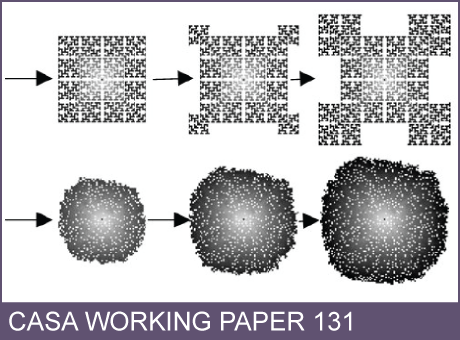CASA Working Paper 131

1 February 2008
Cities as Complex Systems: Scaling, Interactions, Networks, Dynamics and Urban Morphologies
Cities have been treated as systems for fifty year but only in the last two decades has the focus changed from aggregate equilibrium systems to more evolving systems whose structure merges from the bottom up. We first outline the rudiments of the traditional approach focusing on equilibrium and then discuss how the paradigm has changed to one which treats cities as emergent phenomena generated through a combination of hierarchical levels of decision, driven in decentralized fashion. This is consistent with the complexity sciences which dominate the simulation of urban form and function.
We begin however with a review of equilibrium models, particularly those based on spatial interaction, and we then explore how simple dynamic frameworks can be fashioned to generate more realistic models. In exploring dynamics, nonlinear systems which admit chaos and bifurcation have relevance but recently more pragmatic schemes of structuring urban models based on cellular automata and agent-based modeling principles have come to the fore. Most urban models deal with the city in terms of the location of its economic and demographic activities but there is also a move to link such models to urban morphologies which are clearly fractal in structure. Throughout this chapter, we show how key concepts in complexity such as scaling, self-similarity and far-from-equilibrium structures dominate our current treatment of cities, how we might simulate their functioning and how we might predict their futures. We conclude with the key problems that dominate the field and suggest how these might be tackled in future research.
This working paper is available as a PDF. The file size is 1831KB.
Authors: Michael Batty
Publication Date: 1/2/2008
 Close
Close

